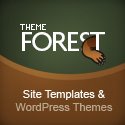It’s easy for everyone to get caught up in obsessing about how to optimise your site & build links for Google, when trying to market through search. That’s certainly a wise thing to do, considering Google totally dominates the search market. But, there are still other search engines that some people are using, so it is wise to make sure your site is performing to the best of its ability in those too!
Obviously the other two engines are Yahoo and Bing and whilst Yahoo is seemingly declining fast, Bing is actually gaining a market share. Furthermore, if the deal between Microsoft and Yahoo goes through, Bing search will be talking over Yahoo anyway. With the muscle of Microsoft behind Bing, you can be sure the search engine won’t be prepared to play second fiddle to Google for long!
However, unlike Google, we don’t hear much about what Bing wants out of a site for decent rankings, but Rick DeJarnette of Bing Webmaster Center has shared some dos and don’ts of link-building for Bing. Not surprisingly, a lot of his advice for complying with Bing’s policies, does not differ too much from the advice that Google would give you. It is however, still always nice to hear what they think, just to clear up any possible confusion.
Like Google, Bing places great emphasis on quality links to determine its rankings. “Just don’t make the mistake of believing it will result in instant gratification. Successful link building efforts require a long-term commitment, not an overnight or turnkey solution,” says DeJarnette. “You need to continually invest in link building efforts with creativity and time.”
What You Should Do!
DeJarnette shared some tips for getting more quality links. The following are Bing’s tips for effective link building (paraphrased):
1. Develop your site as a business brand and brand it consistently
2. Find relevant industry experts, product reviewers, bloggers, and media folk, and make sure they’re aware of your site/content
3. Publish concise, informative press releases online
4. Publish expert articles to online article directories
5. Participate in relevant conversations on blogs/forums, referring back to your site’s content when applicable
6. Use social networks to connect to industry influencers (make sure you have links to your site in your profiles)
7. Create an email newsletter with notifications of new content
8. Launch a blog/forum on your site
9. Participate in relevant industry associations and especially in their online forums
10. Strive to become a trusted expert voice for your industry, while promoting your site
What You Should Not Do!
DeJarnette shared a list of things that you should avoid in your link building efforts, if it is a good Bing ranking that you are after. Here is what Bing says will get your site reviewed more closely by staff:
1. The number of inbound links suddenly increases by orders of magnitude in a short period of time
2. Many inbound links coming from irrelevant blog comments and/or from unrelated sites
3. Using hidden links in your pages
4. Receiving inbound links from paid link farms, link exchanges, or known “bad neighborhoods” on the Web
5. Linking out to known web spam sites
“When probable manipulation is detected, a spam rank factor is applied to a site, depending upon the type and severity of the infraction,” says DeJarnette. “If the spam rating is high, a site can be penalised with a lowered rank. If the violations are egregious, a site can be temporarily or even permanently purged from the index.”
Most of the stuff DeJarnette shared is nothing any experienced search marketer is not already aware of, but it can be quite helpful when a search engine itself lays out what to do and not to do, to help webmasters get better rankings.
"Link-Building Policy for Bing"
- http://www.freshwebz.co.uk/blog/ (view on Google Sidewiki)


